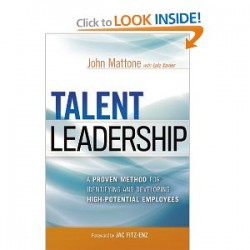It is difficult to describe the company merger process with regard to the effects on employees, but one that I want to touch on today is one that has been a consistent focus area for us in recent years. As a government contractor, if we win a contract, we take over all employees currently working on the contract and they join our workforce.
The issue comes when we start running into employee relations issues with the existing workforce. In other words, we wouldn’t have hired these people outright, but we had to as part of the contract turnover.
 Don’t get me wrong, we also earned ourselves some amazing new staff members who are professional to the core. We’re proud to have them aboard and wouldn’t trade them away.
Don’t get me wrong, we also earned ourselves some amazing new staff members who are professional to the core. We’re proud to have them aboard and wouldn’t trade them away.
But as for some of the others, we had to live with them. We had to put up with them. And it was tough.Â
I’ve talked before about our tough standards of hiring for culture fit. We take this stuff seriously. So what do we do when we have to deal with employees we didn’t hire? How do the parts play out in this scenario? Read on for how I’ve seen the various pieces fall into place over time. It’s an interesting phenomenon and I’d love to hear some ideas from people on how they might have successfully integrated multiple workforce groups.
How do the new employees react in the company merger process?
Well, if time is any indication, they realize pretty quickly that they don’t fit into the new culture. They eventually become uncomfortable with the working arrangement and often resign. We use retention as a key metric for our HR operations, but in instances like those I am perfectly happy to let the person go. Yes, it’s a hassle, but we get to start the recruiting process to find a new person that fits our cultural norms and agrees with our core values and customer-focused mission.
For the ones who are a closer fit to our corporate culture, it’s a really fun time to watch the full transition. Some of the most meaningful compliments I’ve received as an HR professional came from this group of employees, including:
- Wow, our last HR rep wouldn’t have even called me back about this issue.
- Our last HR person didn’t do anything about this problem, but I know you can help.
- It’s so great to be at a company that cares about its people.
- You guys make it fun working here. I love coming to work every morning.
In those moments, I realize that it’s worth all the trouble in the world to make an impact for those select few who do stick with us for the long haul.
What about the originals (employed before the company merger process)?
This is the tough part. Hiring with a strict standard means that the majority of our staff are firmly committed to the success of the organization. Then virtually overnight we gather up a number of people in the company merger process who are more interested in looking for ways to avoid working than they are in actually serving our customers well. It’s a complete 180-degree shift, and for many current employees, it’s very difficult to handle.
We work hard to keep pouring the positivity and encouragement into the staff to keep them from losing focus. The majority of the time these contract changes are geography-based, so we don’t normally have “new” employees working physically close to “old” employees. That definitely helps to lessen the effects of bringing on the new people, though it could also theoretically flow the other way and allow our “old timers” to help influence the new people and teach them what matters.
We also learned the hard way that there’s a shortcut to this cultural indoctrination process.
The company merger process secret weapon
We’ve learned by trial and error that a key to success is embedding a solid leader in a management position with the new staff. That person needs to “bleed green,” as we often say. That doesn’t mean they give up their life for Pinnacle or that they are a brown-nosing loser. It just means they understand our mission and our customer very well and can help coach the other managers and staff on how we do things.
I’ve heard that USAA does something similar. Whenever they open a new office in the field, they don’t hire a brand new person to run the office. They send someone trained in the company’s history, values, and culture out to start the office. Then they grow it organically from there. It’s a brilliant concept, and I think one that is worth exploring if you do much of this type of growth. IÂ talk more about this concept of culture change through mergers and acquisitions in the Rock Your Culture guide, if you’re interested in delving deeper.
Anyone else out there have a company merger process story where you picked up employees that you wouldn’t have hired in the first place? How did you handle the situation?
 Tips for how to build a new team
Tips for how to build a new team Don’t get me wrong, we also earned ourselves some amazing new staff members who are professional to the core. We’re proud to have them aboard and wouldn’t trade them away.
Don’t get me wrong, we also earned ourselves some amazing new staff members who are professional to the core. We’re proud to have them aboard and wouldn’t trade them away.
